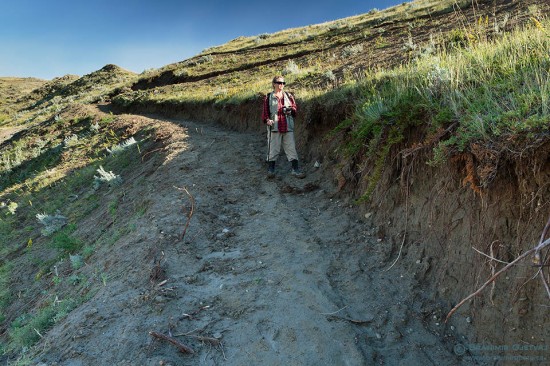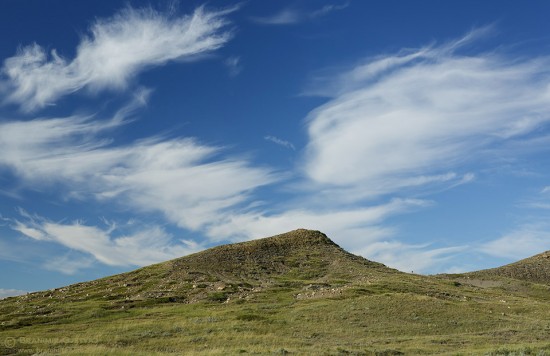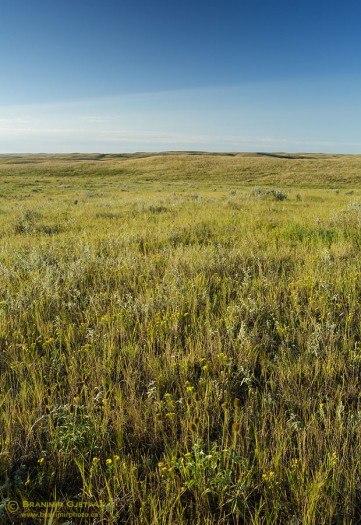August went by in a blink of an eye. At least for me this year. I have been preoccupied with efforts to finish my thesis (I am currently enrolled in a Master of Sustainable Development program at the University of Saskatchewan). A self-imposed restriction on travel & photography resulted in a rather slim harvest of images. A week ago I had to attend a meeting in Val Marie, just a stone throw from Grassland National Park. An opportunity to take my camera gear on a short jaunt and deal with the nagging withdrawal symptoms.
Last year Parks Canada started an extensive trail construction on the iconic 70 Mile Butte in West Block of Grasslands NP. Explanation we received from Parks Canada staff is that the new trails had to be built because of erosion and impact on vegetation due to increasing foot traffic. Thanks to the unfortunate combination of badly designed trails, use of heavy machinery on soils that a prone to erosion and a very wet spring, the trail is in extremely bad shape. You can read more about the mess Parks Canada caused in the Grasslands park in a blog post by the Saskatchewan writer Trevor Herriot. By marking a deep scar on the landscape, the new trails are visible from almost every corner of the 70 Mile and Eagle Buttes. This part of the park will never regain its charm and rugged beauty.
Following the meeting, I had an opportunity to spend a few hours in the park and dust off my camera. After a weekend of heavy rains, the skies cleared out just in time for us to get an afternoon and evening of blue skies filled with beautiful puffy clouds. The best possible therapy I could have received to lift my spirits.
On the return trip to Saskatoon, I stopped by the Auvergne – Wise Creek PFRA community pasture south of Cadillac, and managed to capture a few prairie landscapes. Hope you will enjoy browsing through.
The last image is a composite of two exposures: the original that you see here and a second exposure with added fill-in flash. The flash head was set to 105 mm setting to narrow down the light beam (I was holding the flash connected to camera with an extension cord and pointed it towards the large rock). I set up the flash exposure to manual setting at 1/4 power, just enough to bring in a touch of extra light on the rock. I wanted to have the artificial light source to be slightly warmer than the ambient, but forgot the colour correction gels in my car. The nice light on the clouds you see in the background was fading rapidly and I figured that I could miss the photo opportunity if I ran to the car to fetch the gels.
Later on in post-processing I increased the global temperature of the exposure with flash (“warmed” up the exposure), and opened the two exposures as layers in Photoshop (chose the option in Lightroom under Photo > Edit In > Open As Layers in Photoshop). The images were perfectly aligned so I just ordered them in a way that the exposure with fill-in flash was “below” the straight-on shot. Then I used the eraser tool and carefully deleted part of the image with the rock so the layer below became visible. This allowed me to have a precise control of brightness and light tone on the granite rock.





